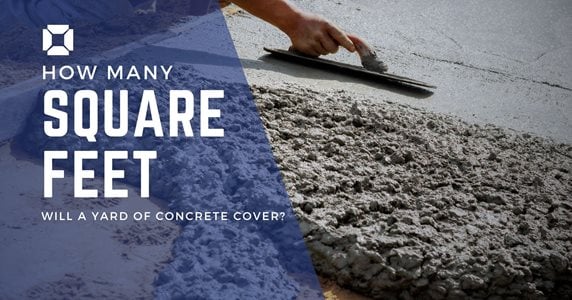- Concrete Calculator
- How Much Concrete for a Patio?
- How Much Concrete for a Driveway?
- How Many Square Feet in a Yard of Concrete?
- Decorative Concrete Projects
- Concrete Floors
- Concrete Patios
- Concrete Countertops
- Decorative Concrete Applications
- Stamped Concrete
- Stained Concrete
- Concrete Polishing
- More Resources
- Concrete Designs: Decorative concrete ideas for patios, floors, driveways, pool decks, countertops, and more
- Decorative Concrete Mix Design
- Concrete Sealers
How Many Square Feet Will a Yard of Concrete Cover?
Determine how much coverage you’ll get from a yard of concrete by following these simple steps.When you’re estimating the cost of a decorative concrete slab, a useful figure to know is how much a yard of concrete will cover. Because ready-mix concrete is sold by volume measured in cubic yards, rather than square footage, the math can be a bit tricky. What’s more, when you pour concrete for a slab, it not only fills a square-foot area, it also fills it to a certain depth. The thicker the slab, the more concrete you’ll need to cover the same area.
Find concrete contractors near me.
Here’s how to determine just how far a yard of concrete will go, whether you are ordering the concrete from a ready-mix supplier or buying a bagged mix.
Determine the slab thickness
Because the amount of square feet you'll get from a yard of concrete will depend on how thick your slab is, the first step is to determine the depth of your slab. Most residential concrete patio and sidewalk slabs are 4 inches thick, while driveway slabs may be as thick as 5 to 6 inches (see Concrete Driveway Thickness).
Below is the number of square feet a yard of concrete will cover at various slab thicknesses:
- 4 inches = 81 sq. ft.
- 5 inches = 65 sq. ft.
- 6 inches = 54 sq. ft.
- 8 inches = 41 sq. ft.
Calculate the square foot coverage
Using the information above, it’s easy to figure out how much concrete you’ll need to place a slab of a certain size. The basic formula is to multiply the length and width of the slab in feet and divide it by the square-foot coverage based on slab thickness. For example, if you want to place a slab that’s 10 feet long, 10 feet wide, and 4 inches thick, you’ll need approximately 1.23 yards of concrete (10 feet x 10 feet ÷ 81 = 1.23). You can also use our online concrete calculator to help you do the math by entering in the slab length, width, and thickness.
Tip: Not all concrete slabs are simple rectangles. For an irregularly shaped slab, create a scaled drawing of the slab on graph paper then divide the irregular shape into a series of rectangles to determine the area for each. Add the results of all your shapes to get the total square footage.
Calculate how many bags of concrete you’ll need
If you plan to use premixed bags of concrete rather than ordering concrete from a ready-mix supplier, then you’ll have to figure out how many bags of concrete equal a yard. Because a bag of concrete is measured in cubic feet rather than in cubic yards, you’ll need to calculate how many bags you need based on the cubic feet of concrete you’re pouring. The amount will also depend on the bag size you choose.
For example, an 80-pound bag of mix yields approximately 0.60 cubic feet of concrete while a 40-pound bag yields 0.30 cubic feet. To produce a yard of concrete, you’ll need to use about 45 80-pound bags or 90 40-pound bags. (Note: A cubic yard of concrete contains 27 cubic feet, so when you divide 27 by 0.60, the result is equivalent to 45 bags.)
How many square feet can a bag of concrete cover? Again, It depends on how thick your slab is. For instance, an 80-pound bag of concrete placed at a 4-inch thickness will cover 1.8 square feet. At a 6-inch thickness, it will cover 1.2 square feet.
Should I buy bagged concrete or have ready-mix delivered?
Premixed bags of concrete are a great alternative for small to medium-sized projects, such as a sidewalk slab or small patio. But for larger jobs requiring more than a cubic yard of concrete, it’s usually more convenient and efficient to order ready-mix concrete.
Be aware that ready-mix suppliers often require a minimum order of 1 cubic yard of concrete per delivery. The advantage of a bagged mix is that you can buy smaller quantities of concrete in the amount needed with very little waste.
Learn more about ordering ready-mixed concrete.
Should I order extra concrete?
When ordering concrete, it’s always better to be safe than sorry. To be sure you’ll have enough material to finish the job, order 10% to 15% more concrete than planned for to account for spillage during the pour, an uneven subgrade, and other variables. Coming up short on a concrete pour will force you to put the project on hold until another delivery of concrete arrives, which is likely to be more expensive than the cost of ordering extra concrete from the start.





